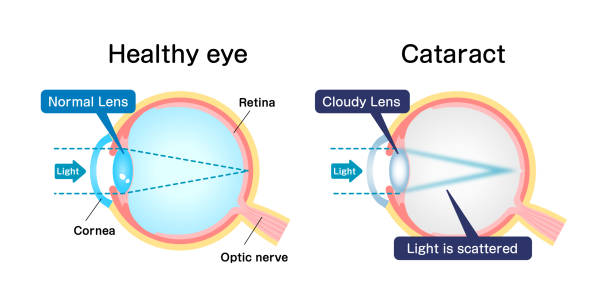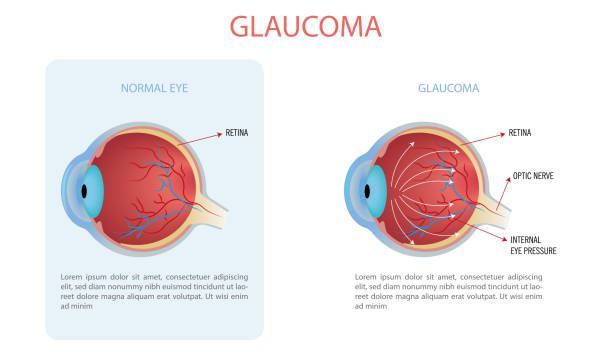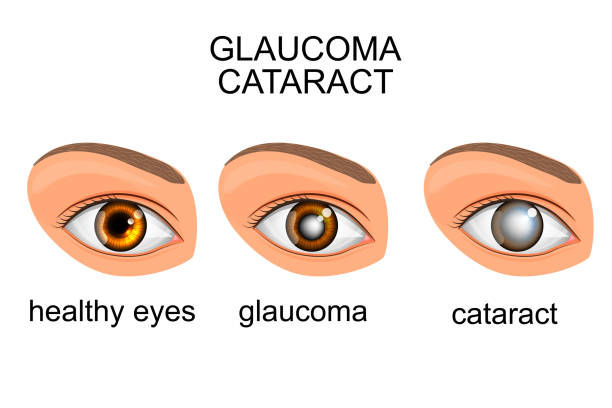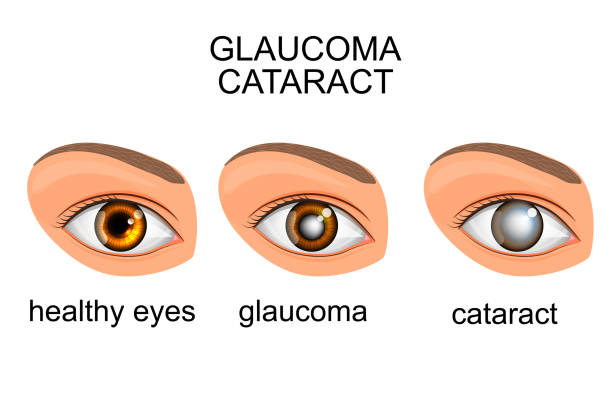As we age, our eyes undergo natural changes that can lead to various vision problems, some of which may significantly affect our daily lives. Two of the most common eye conditions that impact older adults are cataracts and glaucoma. While both can lead to vision impairment or even blindness if left untreated, they are distinct in their causes, symptoms, and treatment options.
Cataracts develop gradually, causing clouding of the eye’s natural lens, whereas glaucoma is a group of diseases that damage the optic nerve, often due to increased pressure inside the eye. Understanding these conditions is essential for early detection and effective management.
In this blog post, we will explore what cataracts and glaucoma are, how they affect your vision, the warning signs to watch for, and the steps you can take to prevent or manage them to maintain healthy eyesight as you age.
What Are Cataracts?

A cataract is a clouding of the natural lens in the eye. The lens is responsible for focusing light onto the retina, which helps us see clearly. When a cataract forms, it obstructs light from reaching the retina, causing blurry or cloudy vision.
Cataracts typically develop slowly over time, so you may not notice any changes at first. However, as they progress, cataracts can cause significant vision issues. The most common symptoms of cataracts include:
- Blurry or cloudy vision: Things may appear hazy or out of focus, like looking through a foggy window.
- Sensitivity to light and glare: You may find bright lights uncomfortable or see halos around lights.
- Difficulty seeing at night: Low-light situations, like driving at night, can become harder.
- Colors that seem faded or yellowed: Colors may lose their brightness or appear yellowish.
- Double vision: This can occur when a cataract is in its advanced stages.
While cataracts are most common in people over 60, they can also develop earlier due to factors like eye injury, certain medications, or medical conditions like diabetes. Fortunately, cataracts are treatable with surgery. During cataract surgery, the cloudy lens is removed and replaced with a clear artificial lens, which restores clear vision.
What Is Glaucoma?

Glaucoma refers to a group of eye conditions that cause damage to the optic nerve, which is responsible for sending visual information from the eye to the brain. The most common cause of glaucoma is increased pressure inside the eye, known as intraocular pressure. However, glaucoma can also develop in people with normal eye pressure, making it harder to detect early.
There are two main types of glaucoma:
- Open-Angle Glaucoma: This is the most common form and develops gradually. In its early stages, there may be no symptoms at all. As the disease progresses, it typically causes a slow loss of peripheral (side) vision, which is hard to notice until significant damage has been done.
- Angle-Closure Glaucoma: This type is less common but more dangerous. It occurs when the angle between the iris and cornea becomes narrow or blocked, leading to a sudden rise in eye pressure. Symptoms include intense eye pain, nausea, vomiting, and blurred vision. This type of glaucoma requires immediate medical attention to prevent permanent vision loss.
Glaucoma is often referred to as the “silent thief of sight” because it causes little or no symptoms until vision loss has already occurred. For this reason, regular eye exams are essential for early detection. While there is no cure for glaucoma, it can be managed with medications, eye drops, or surgery, which can help control eye pressure and prevent further damage.
How Cataracts and Glaucoma Differ

Cataracts and glaucoma may both affect vision, but they are different in several key ways:
- Cause: Cataracts occur when the lens in the eye becomes cloudy, blocking light from reaching the retina. Glaucoma, on the other hand, is caused by damage to the optic nerve, often due to increased eye pressure.
- Symptoms: Cataracts lead to blurry or cloudy vision, while glaucoma typically causes loss of peripheral vision and, if untreated, can result in total blindness.
- Treatment: Cataracts can be treated with surgery to replace the cloudy lens with an artificial one, restoring clear vision. Glaucoma is usually treated with medications or eye drops to lower intraocular pressure. In more severe cases, surgery may be required.
Risk Factors for Cataracts and Glaucoma
While both cataracts and glaucoma become more common with age, several other factors can also increase your risk of developing these eye conditions. Genetics, lifestyle choices, and underlying health issues such as diabetes or high blood pressure can all play a role. Prolonged exposure to UV rays, smoking, poor diet, and certain medications may also contribute to eye health deterioration over time.
By understanding these risk factors, you can take proactive steps—such as wearing UV-protective sunglasses, maintaining a healthy diet, managing medical conditions, and getting regular eye exams—to help protect your vision and reduce the likelihood of developing serious eye problems.
Risk factors for cataracts:
- Age: Cataracts are most common in people over 60, but they can develop earlier in some cases.
- Family history: If your parents or siblings had cataracts, you may be more likely to develop them.
- UV light exposure: Prolonged exposure to sunlight without proper eye protection can increase the risk of cataracts.
- Smoking: Tobacco use is strongly linked to cataract development.
- Diabetes: People with diabetes have a higher risk of cataracts due to changes in blood sugar levels.
- High blood pressure: This condition can contribute to the formation of cataracts.
- Corticosteroid medications: Long-term use of steroids can increase the risk of cataracts.
Risk factors for glaucoma:
- Age: The risk of developing glaucoma increases with age, especially after 60.
- Family history: A family member with glaucoma increases your risk of developing the condition.
- Ethnicity: African Americans, Hispanics, and Asians are at higher risk of glaucoma, with African Americans being especially vulnerable to open-angle glaucoma.
- High eye pressure: People with high intraocular pressure are more likely to develop glaucoma, though it can also occur with normal pressure.
- Thin corneas: A thin cornea may increase the risk of glaucoma.
- Previous eye injuries or surgery: Any damage to the eye can raise the risk of glaucoma.
- Diabetes: Diabetic individuals are more likely to develop glaucoma.
How to Protect Your Eyes from Cataracts and Glaucoma
Though some risk factors, such as aging and genetics, are beyond your control, there are several proactive steps you can take to protect your eyes and lower your chances of developing cataracts or glaucoma. Maintaining a healthy lifestyle by eating a nutrient-rich diet, staying physically active, and avoiding smoking can support overall eye health.
Wearing sunglasses that block UV rays helps protect your eyes from sun damage, which can contribute to cataract formation. Managing underlying health conditions like diabetes and high blood pressure is also crucial, as these can increase the risk of both conditions.
Additionally, scheduling regular comprehensive eye exams allows for early detection and timely treatment, which can prevent or slow vision loss. Taking these steps can go a long way in preserving your eyesight as you age.
For cataracts:
- Wear sunglasses: Always wear sunglasses that block 100% of UV rays to protect your eyes from the harmful effects of sun exposure.
- Quit smoking: Smoking is a known risk factor for cataracts, so quitting can help reduce your risk.
- Manage diabetes: Keeping blood sugar levels under control can help prevent cataracts.
- Eat a healthy diet: A diet rich in fruits, vegetables, and antioxidants can help protect the eyes from damage.
- Get regular eye exams: Regular checkups will help detect cataracts early, so treatment can begin sooner.
For glaucoma:
- Get regular eye exams: Regular eye exams are essential for detecting glaucoma early, especially if you are over 40 or have a family history of the condition.
- Take prescribed medications: If you are diagnosed with glaucoma, follow your doctor’s instructions for any prescribed medications or eye drops to lower eye pressure.
- Exercise regularly: Regular physical activity helps improve blood flow to the eyes and can lower intraocular pressure.
- Maintain a healthy lifestyle: Control your weight, blood pressure, and overall health to reduce the risk of glaucoma.
- Avoid steroid medications: Prolonged use of steroids can increase the risk of glaucoma, so discuss alternatives with your doctor if needed.
Conclusion
Cataracts and glaucoma are two serious eye conditions that can lead to significant vision loss or even blindness if left untreated. However, the good news is that both conditions can be managed effectively, and with early detection, vision loss can often be slowed or prevented. Regular comprehensive eye exams are essential, especially as you age, since they allow eye care professionals to detect these conditions in their earliest stages when treatment is most effective.
Beyond regular check-ups, taking proactive steps to protect your eyes can make a big difference. Maintaining a healthy lifestyle—such as eating a balanced diet rich in eye-supporting nutrients like vitamins A, C, and E, staying physically active, and avoiding smoking—can support overall eye health. Wearing sunglasses with UV protection and safety glasses when needed can help protect your eyes from environmental damage. Managing chronic health conditions, such as diabetes and high blood pressure, is also crucial since these conditions can increase your risk of developing both cataracts and glaucoma.
If you experience any changes in your vision, such as blurry vision, difficulty seeing at night, loss of peripheral vision, or increased sensitivity to light, don’t ignore these warning signs. Consult an eye care professional as soon as possible to determine the cause and explore treatment options. By taking these preventive measures and staying proactive about your eye health, you can help preserve your vision and enjoy clear sight for many years to come.

